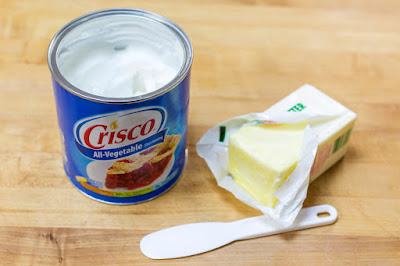In The Lab
This cookbook by Susan Purdy, Pie in the Sky, was a gift from Becky and it's a great resource for baking at high altitude. The author lived at times in Santa Fe and experimented here and her guidelines on how to adjust are really helpful.
The first two Christmases we lived in Santa Fe, I baked my traditional Christmas cookie recipes for my family without any adjustments for altitude. They came out . . . okay. A little dry and the shapes were a mess.
Cookies do not need as much adjustment at high altitude as high rising cakes and muffins do, but lower boiling point (water boils here at 197 degrees) and drier air and less pressure means cookies spread out too much in the oven, lose structure and dry out.
You can't simply add moisture, it helps but doesn't address the chemical structures of proteins, sugars and gas reactions as dough bakes. You can't just bake at higher oven temperatures to account for the low boiling point.
Instead, you have to do chemistry.
So this year I'm going into the lab. I'm making adjustments to generations-old family recipes with the help of Pie in the Sky. Here's what science and chemistry and a high altitude cookbook dictate:
First -- use shortening instead of butter.
It takes longer to melt and cookies spreading out in our thin atmosphere is a problem. Two of my recipes already call for shortening, no butter; the other can be made with 1/3 of the butter substituted. Traditional New Mexican biscochito holiday cookies actually call for lard.
Second -- more acid less alkali.
Alkali + acid combines in any dough to create gas and it's the gas reaction that leavens baked goods. Leavening is the issue above 5,000 feet. Cut back on the baking powder, which is alkali and acid already combined together. My recipes actually call for baking soda which is pure alkali and and cream of tartar which is acid, so I can more easily adjust components each by itself.
Less alkali (less baking soda) is the proposition. How much less is the question. Lab experiments ensue.
Third -- add moisture.
An extra egg yolk, not just water. The yolk adds a bit of liquid which helps with too much dryness, but also adds a tad more protein and fat to hold things together.
Fourth -- buy a new oven.
Ours is old, it came with the house and needs replacement (which will happen next year after our new windows are paid off). It's not very efficient. But absent a new range, I'll bake cookies longer, or at higher temps or possibly lower. According to the Susan Purdy cookbook, it could go either way. She's helpful, but her temperature directions are not instructive. I'll experiment.
Her cookbook has human interest stories of baking in Santa Fe, and it's clear that the bread makers and muffin vendors here guard their recipes closely. All the professional bakeries in this city have experimented endlessly and plowed through many failures to get their cakes and batards to come out right at this altitude.
This month I'll be in my lab, substituting recipe amounts and tinkering with chemistry, perfecting my modest cookie recipes to add to the science of baking in Santa Fe.





Comments